Last Updated on April 5, 2024
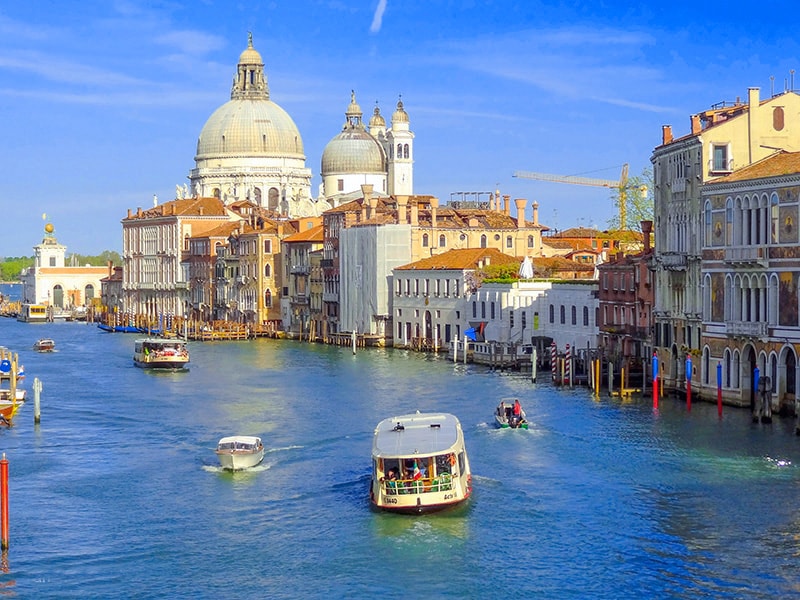
Estimated reading time: 20 minutes
Updated for 2022 / 2023
By Jim Ferri
You’ll find an incredible number of the “best places to visit in Venice,” since the city is unlike any other in the world.
In fact, for many travelers, Venice is one of the most captivating cities in the world. The capital of the region of Veneto, which is also one of the very top places to visit in all of Italy.

Just a series of small fishing settlements back in the 6th century, Venice became a powerful Republic 600 years later. Today it’s a mesmerizing city of black-hulled gondolas sliding quietly on myriad canals and under centuries-old little bridges. More importantly, this treasure-trove of artistic treasures is easy to reach on a day trip by train from Florence and other Italian cities..
It’s also a city that morphs through a palette of soft colors throughout the day and evening. A city of 117 islands covered with beautiful palazzos, magnificent museums, and scores of movie-set-like neighborhoods right on the water’s edge…the only city in the world built entirely above the water.
The absence of cars also has an effect since you hear many sounds you usually will not hear elsewhere…the bells from the old bell towers all over the city…waves slapping against pilings and the bows of boats and the ancient stones of buildings. And you’ll not see any bicycles since, like cars, they are also prohibited by law.
A Wealth of Ancient Art
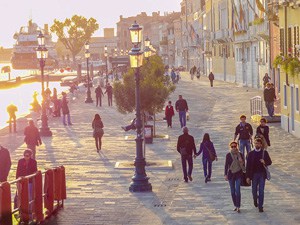
From the 14th to the 18th century especially, many artists left their mark on Venice. Some were drawn to the city by its beauty, others by lucrative commissions from merchants and religious and charitable institutions that commissioned them to embellish their premises. The treasures they left behind are still enjoyed by Venetians and the world today.
For author Truman Capote, “Venice is like eating an entire box of chocolate liqueurs in one go.” It is for me also, every time I return.
The Best Place to Visit in Venice: the Grand Canal
Above all, one of the best ways to experience the iconic and sinuous Grand Canal is aboard Vaporetto #1. Understand it’s not just a public water taxi; it’s one of the best experiences any visitor to Venice can have.
There are stops at the railway station and near St. Mark’s Square, and several places in between. If you can grab a seat, just sit back and relax as it makes its way along the winding waterway. On the other hand, if there’s a crowd, just relax and enjoy the view.
It’s a beautiful ride, and all along the waterway history will unfurl about you. It’s the best place in Venice to see five centuries of palaces, most bearing some once-great Venetian family name, and other beautiful buildings.
Watch for the Palazzo Vendramin Calergi, Venice’s preeminent Renaissance palace, where the composer Richard Wagner died in 1883. You’ll also see another palace, Ca’ Pesaro, now home to the International Gallery of Modern Art.
In addition to plenty of palazzos heading upstream to San Marco, you’ll also pass the art heaven of Gallerie dell’Accademia. Close by, the Peggy Guggenheim Collection clutches a great collection of modern art.
The Canal’s beautiful buildings continue like a string of pearls, so get a good guidebook/map to know what you’re viewing.
Vaporetto Tickets
The normal vaporetto ticket is €7.50 for one hour. For most travelers, however, it’s best to buy one of the Tourist Travel Cards , which are much more economical if you’re traveling about the city. Prices are €20 for one day, €30 for two days, €40 for three days, and €60 for one week.
Piazza San Marco, One of the Most-Famous Best Places to Visit in Venice
Once described by Napoleon as “the finest drawing room in Europe,” the Piazza San Marco is Venice’s Holy Grail, and one of the best places to visit in Venice any time of year. It’s such a revered place that it’s the only Piazza in the city; all other squares are known as Campos.

As one might expect, it can get obscenely crowded during the high tourist season, April through November. However, you can avoid wasting a lot of time standing in endless lines by planning your visit.
First of all, beat the crowds by timing your visit for the early morning. Enjoy a coffee while wandering along the peaceful Canal and lagoon. Watch the changing light as the rising sun illuminates the Basilica and the lagoon and its islands. Arriving early in the morning will also put you at the front of the queue to visit the Basilica and Doges’ Palace.
Beat The Crowds At the Basilica
If you arrive late in the morning, don’t waste your time standing in the long lines. (Any time before noon is when tour groups arrive, and they go to the head of the line.) Instead, wander around the rest of the Piazza and come back in mid-afternoon when the crowds have dissipated.
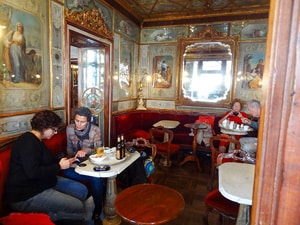
Nearby you’ll find the 300-year-old Caffè Florian, one of the elder statesmen of the Piazza, and its elegant rival Quadri, sitting directly across. Both lend an air of elegance to the St. Mark’s experience with their tuxedoed waiters and mini orchestras.
Visit the interior of both cafes, especially the ornate rooms of the Florian. Be aware you’ll pay dearly if you sit at one of the tables either outside or in.
If you fear birds, be aware that Piazza San Marco is pigeon heaven. In fact, more than 100,000 pigeons live in St. Mark’s Square. Fortunately, however, the city seems to have diminished that population in recent years.
Caffè Florian
Piazza San Marco, 57
[email protected]
Tel: +39 041 520 56 41
Caffè Quadri
St. Mark’s Square, 121
[email protected]
Tel: +39 049 630303

Places to Visit in Venice: Basilica San Marco
If St. Mark’s Square is the heart of Venice, St. Mark’s Basilica is its soul. Centuries ago, it was the official Chapel of the Doges, the rulers of the Venetian Republic. There’s little wonder why it’s perennially named as one of the best places to visit in Venice.
With five domes, it’s a masterpiece of Byzantine architecture, a jewel that blends the architectural styles of East and West. The interior of the Basilica, covered with 40,000 square feet of golden mosaics, is the repository of Byzantine treasures looted by the Venetians during the Renaissance period.
These treasures weren’t the only things looted. The body of St. Mark, for whom the Basilica is named, was also stolen from Alexandria, Egypt, by two Venetian businessmen. It was then brought back to Venice and presented to the Doge.
In addition, the four bronze horses on the loggia, so symbolic of the cathedral, were taken from the Constantinople Hippodrome in 1204. The ones you see outside are replicas. But step inside the door just a few feet away, and you’ll see the real thing.
By all means, even if you visit no other area after the main Basilica (entrance fee €3), pay the €7 fee to go up to the loggia. The reward for the climb is a close-up of the horses and a beautiful view of the Piazza.
While on the loggia, look to the right for a good photo of the beautiful Torre dell’Orologio, the Renaissance clock tower. It sits above one of the entrances leading into the warren of streets beyond.
Basilica San Marco
Admission: main Basilica €3; Loggia €7
Open: Daily 9:30am – 5:15pm
The Doges’ Palace, A Historical Place in the City
The Palazzo Ducale (the Doge’s Palace), adjacent to the Basilica, was the seat of power during the period of the Venetian Republic. It was the official residence of the more than 100 Doges who ruled the Venetian Republic for 1,100 years. The Basilica was joined to it in the 15th century.
Like the Basilica, the palace is a beautiful and fascinating place to visit with its many works of art. Undoubtedly, it has been on traveler’s lists of “the best places to visit”for scores of years, if not centuries. Tours of it, however, can get long, but there’s plenty to see and keep you occupied. You can also purchase a “Secret Itineraries Tour” of the palace. It provides access to other areas with a guide at fixed times and must be pre-booked.

The Doge’s Apartments are on the first floor of the palace, but the real visual treats are on the second. It’s there you’ll find the ornate chambers and Sala del Maggior Consiglio, the Grand Council Hall. Tintoretto’s “Paradise,” the world’s largest oil-on-canvas painting, covers its entire 177 foot- (54 meters) rear wall.
Undeniably, as you’ll see, the palace is vast, with plenty to see, including its notorious prison. The prison is linked by the Ponte dei Sospiri, the infamous Bridge of Sighs, which connects the interrogation rooms in the Doge’s Palace with the first floor of the prison.
As for its name, prisoners are said to have sighed when they looked out at the city en route to the dungeon. It spans Rio di Palazzo, and you can see it by walking along the Grand Canal outside the Doge’s Palace. At the first canal, look to your left.
Doges’ Palace
Admission: Ticket prices range from €13-25. There is also a range of discount tickets.
Open: 9am – 7pm
The Campanile
You’ll get a spectacular view of Venice from the top of the Campanile, the bell tower on St. Mark’s Square. It dis, however, take 10 years to rebuild it to its 16th-century specifications after its collapse in a 1902 earthquake. Thankfully, there’s an elevator to the top of the 323-foot structure, the tallest building in Venice.
If you want to do something incredibly unusual, time your visit to be at the top when the bells ring on the hour. The bells are as large as the Liberty Bell and hang only 6 feet or so above your head. And they don’t ring just the number of the hour but continue ringing for several minutes. They’re so loud you’ll likely need to put your fingers in your ears to muffle the sound.
The Campanile
Open: 9.30am to 9.15pm
Admission: 10 € (free for children up to 6 years of age). Last admission: 8.45pm
The Rialto Markets, Wonderful Places to Visit in the City
At one time, the Rialto Bridge was the only foot route across the Grand Canal. It’s a beautiful bridge and a remarkable feat of Renaissance engineering.
In addition, it’s one of Venice’s most famous landmarks and a great spot to photograph the Grand Canal. It’s also the city’s commercial heart, with shops hugging both sides of the bridge and street.
Just a two-minute walk from the bridge is the Pescheria di Rialto, the lively Rialto Fish Market. A covered colonnaded marketplace, it’s on the same spot as the original fish market more than 500 years ago.
If you get to the Peschiera early, you’ll find restaurant chefs selecting their meals for the day as the fish are unloaded from small boats on a side canal.
Many locals also come here to do their daily shopping since there are also greengrocers on the market’s periphery, with a few butcher shops and ubiquitous coffee bars and cafes nearby. It’s open Tuesday to Saturday and closes at about 1pm. Arrive early to avoid the crowds.
Best Area Restaurants
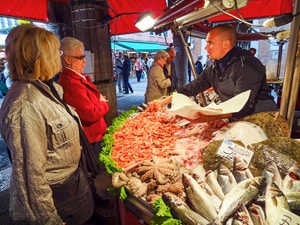
Some of the best places to visit in Venice are the city’s restaurants, and there are also some excellent restaurants in the area. The nearby Trattoria alla Madonna (Calle della Madonna, 594) is a popular fish restaurant whose seafood risotto is claimed by some to be the best in the city.
Cantina do Mori (San Polo 429) is a favorite of many and is the oldest tavern in Venice. Known for its classic Italian fare, it has a large selection of wines and cicchetti (more or less the Italian version of tapas), and other snack specialties.
There are also many other small restaurants and wine bars (bacaro) in the area, as elsewhere in the city. Try some of their classic Venetian favorites…Seppi al Nero (cuttlefish in its ink), sarde al soar (sardines marinated in onions and white wine vinegar), and baccala mantecata (creamed cod).
Trattoria alla Madonna
Calle della Madonna, 594
[email protected]
Tel: 39 0415223824
Cantina do Mori
Calle Do Mori, 429
It does not have a web page.
Places to Visit in Venice: the Art Treasures of the City
Although Venice is relatively small, it has more artistic and architectural wonders than many nations. Thankfully, some of the city’s most notable works are gathered in two amazing collections.
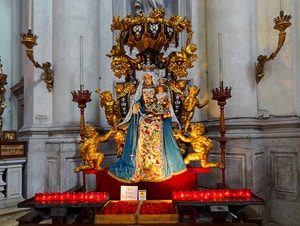
The first, the Gallerie dell’Accademia, is home to one of the most significant collections of Venetian paintings in the world and, arguably, the best gallery in the city and one of the best places to visit in Venice. It’s also a dazzling gallery, to some the Venetian equivalent of the Uffizi in Florence. Visit it, and you’ll likely wish it was closer to home.
The Accademia is where Napoleon moved many of the artistic treasures of Venice in 1807 after he conquered Italy. You’ll find works by Giovanni and Gentile Bellini, Giorgione, Veronese, Titian, and many others.
It’s housed in the former Santa Maria della Carità convent. So even if you’re not a fan of Venetian art, pay it a visit. Most likely, you’ll enjoy yourself.
Peggy Guggenheim Collection
The second, the Collezione Peggy Guggenheim (Peggy Guggenheim Collection), is a center of modern art representing such avant-garde movements as Surrealism, Cubism, and Futurism. The collection includes works by more than 200 artists, including Pablo Picasso, Piet Mondrian, and René Magritte.
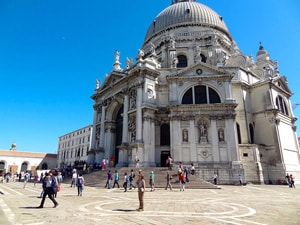
This being Italy, you’ll also find many of Venice’s art treasures in churches, such as Santa Maria della Salute. A basilica on Dorsoduro, it’s at the Grand Canal entrance across from St. Mark’s. Most travelers on Vaporetto #1 pass it by in their rush to the Piazza, but it’s well worth a visit.
Following a deadly 17th-century-plague, the Venetians built the Basilica to thank the Virgin Mary for saving the city. Inside are numerous works by Titian, including paintings of scenes from the Old Testament on the ceiling.
On a hot summer day, you’ll find it to be one of the best places to visit in Venice for providing a cool respite from the heat.
Gallerie dell’Accademia
Campo della Carità
Dorsoduro 1050
[email protected]
Open Mondays 8:15am to 2pm / Tuesday to Sunday 8:15am to 7:15 pm
Admission: €12.00 / Age 18-25: €2.00 / 18 and younger free
Peggy Guggenheim Collection
Palazzo Venier dei Leoni
Dorsoduro 701
[email protected]
Open daily 10 am – 6 pm. Closed on Tuesdays
Admission: Adults: €15 / Age 65+: €13 / Students with ID: €9 / Children under 10 years: free
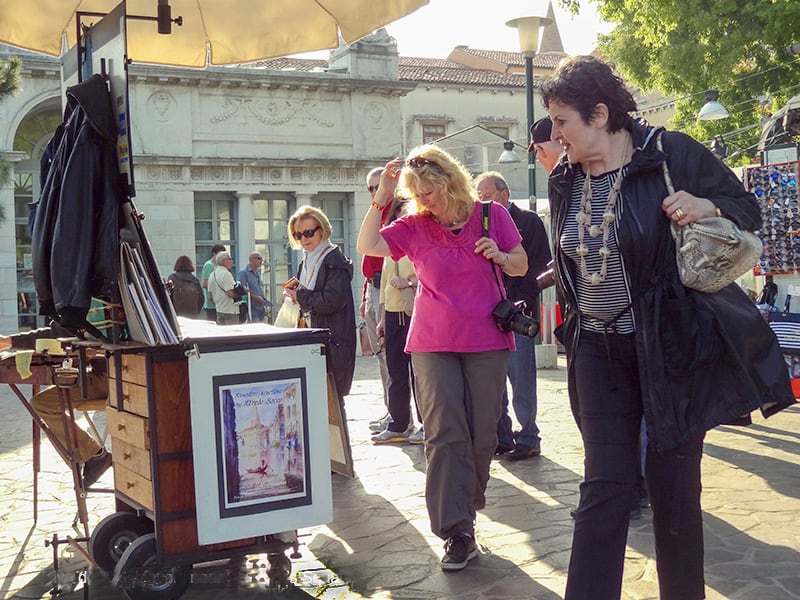
Find Many Best Places to Visit in Venice in Its Sestieri
Venice is a beautiful city to be led about by your curiosity. And the very best way to experience it is just to set out walking and get lost.
When in Venice, don’t limit yourself only to the best places to visit in the city listed above. Also, wander the labyrinth of streets and alleyways in the Sestieri (singularly called sestiere), the neighborhood districts.
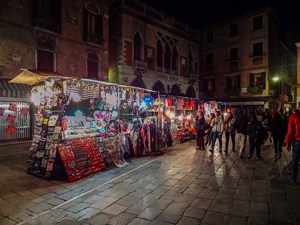
There are six of them in “central” Venice: Cannaregio, Santa Croce, San Polo, Dorsoduro, Castello, and San Marco. A seventh, Giudecca, is further out in the lagoon.
Undoubtedly, the most popular with visitors is Sestiere San Marco, which wraps around the Piazza and the Basilica. With the crowds snaking through its alleyways past a crescendo of Carnevale-mask shops and legions of waiters trying to lure you to a table, at times can feel like Venice on steroids. Any time of year, though, it’s a fun place to wander.
At the end of the day, walk over to the one-and-only Harry’s Bar made famous by Hemingway, Toscanini, Chaplin, Bogart and Bacall, Taylor and Burton. It’s the home of the Bellini, Carpaccio, and the extravagant bill. It’s right next to the San Marco Vaporetto stop, where you can hop aboard #1 and head up the Canal.
Another wonderful sestieri is Dorsoduro, directly across the Grand Canal from Piazza San Marco and Harry’s. It’s here where you’ll find the Accademia and the Peggy Guggenheim Collection. It’s one of my favorites since it teems with activity and is an fun place to walkabout.
Wonderful Dorsoduro
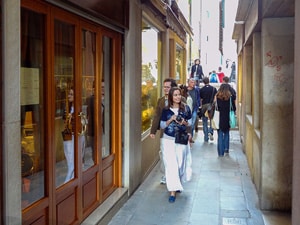
Stand on Punta della Gogana, the tip of Dorsoduro’s little peninsula, for a beautiful view of the lagoon. On the far side, stroll along Fondamenta Zattere, the waterfront promenade. Then delve into its maze of streets crisscrossed with canals and bridges to view an authentic slice of Venetian life. On one of its small canals there is a shop where gondolas are built.
The Sestieri of Cannaregio and Castello are still predominantly residential. However, walk around them, and you’ll occasionally get a glimpse of old Venice…women sitting outside their homes chatting with friends, children playing soccer in the squares, etc.
Cannaregio is most famous for being the home of Venice’s 16th-century-Jewish ghetto, the world’s very first ghetto. The district still has five synagogues, with one of them, Schola Tedesca, dating to 1528. Moreover, Shakespeare’s “Merchant of Venice” was set in this ghetto, near San Marcuola Church. Venice’s rail station is also on Cannaregio.
Castello is best known for the Arsenale, Venice’s famous shipyard, which employed 16,000 and made Venice a naval power. It was once the largest naval complex in all of Europe.
Santa Croce (across the Canal from the rail station) and San Polo contain churches with artistic treasures, monuments, and palaces. The Rialto Fish Market is also on San Polo.
Harry’s Bar
San Marco 1323
Tel: +39 041 52 85 777
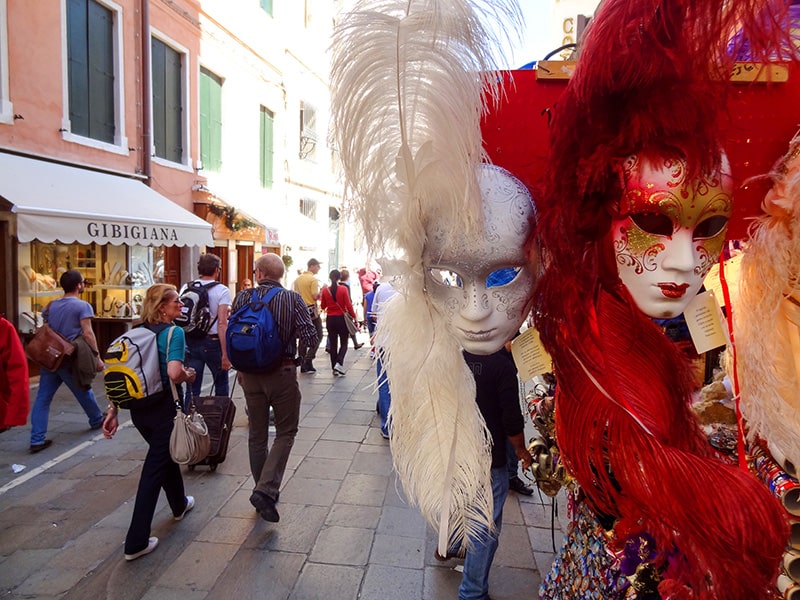
A Word About Shopping
Many people searching for a small memento of Venice head back home with a Carnivale mask or two. You’ll find many mask shops in the warren of streets leading off St. Mark’s Square. I bought a few modern ones for gifts and an “antique” mask, which, most likely, is not that old. But I liked it, and that’s all that matters.
If you have bigger ambitions and a (much) bigger budget, however, you may set your sights on Venetian glass. You’ll find many Venetian glass shops throughout the city selling everything from beautiful ashtrays to over-the-top chandeliers.
Be aware, however, that not all Venetian glass is authentic Murano glass. In fact, some of the glass you might see in shops in Venice may not even be made in Italy.
On the other hand, if you are seeking top-quality Murano glass, be ready to pay the price. And to ensure you’re purchasing the real thing, demand a certificate of authenticity. You can also buy Murano glass at the source by taking a tour to Murano Island. Tours can often be arranged by your hotel.
If You Go:
Italian National Tourist Board
New York
686 Park Avenue – 3rd Floor
New York, NY 10065
[email protected]
Los Angeles
10850 Wilshire Blvd. Suite 575
Los Angeles, CA 90024
[email protected]
Toronto
365 Bay Street – Suite 503
Toronto (Ontario) M5H 2V1
[email protected]

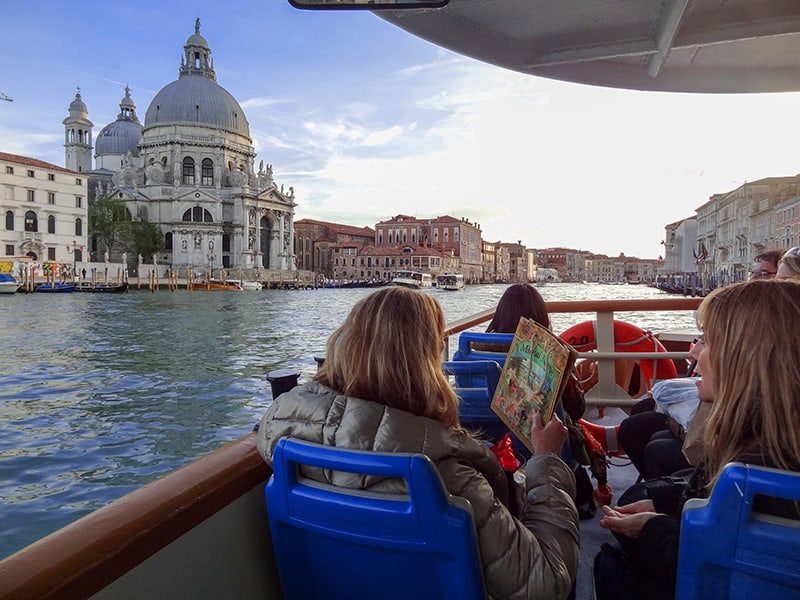
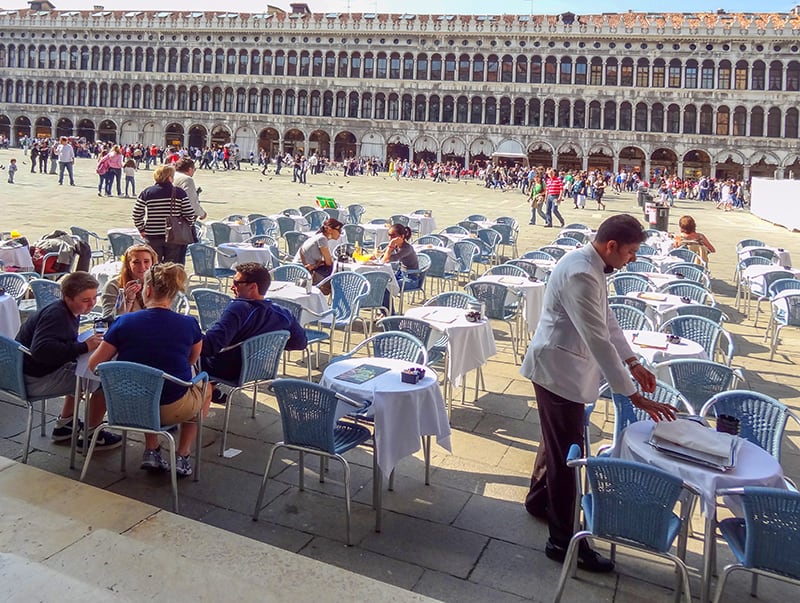
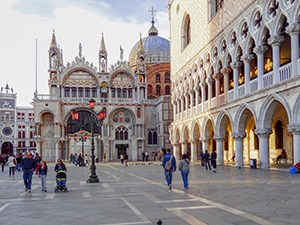
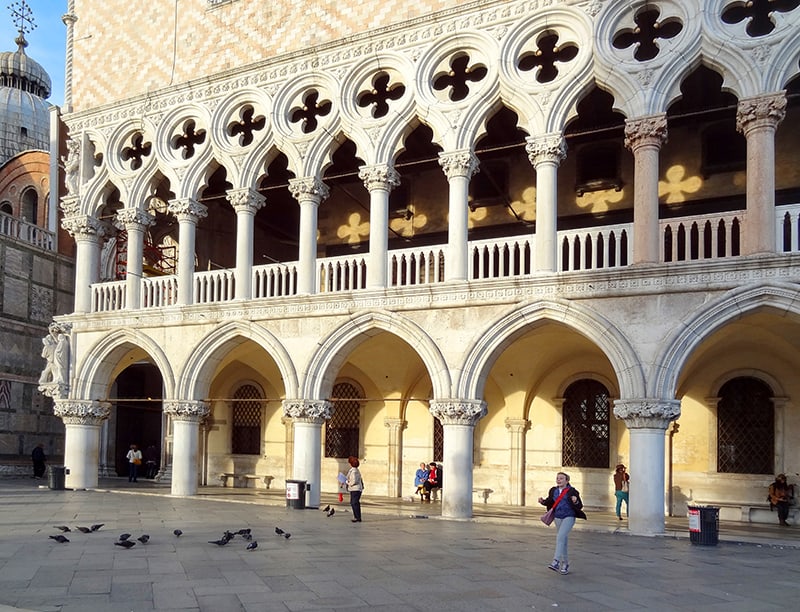
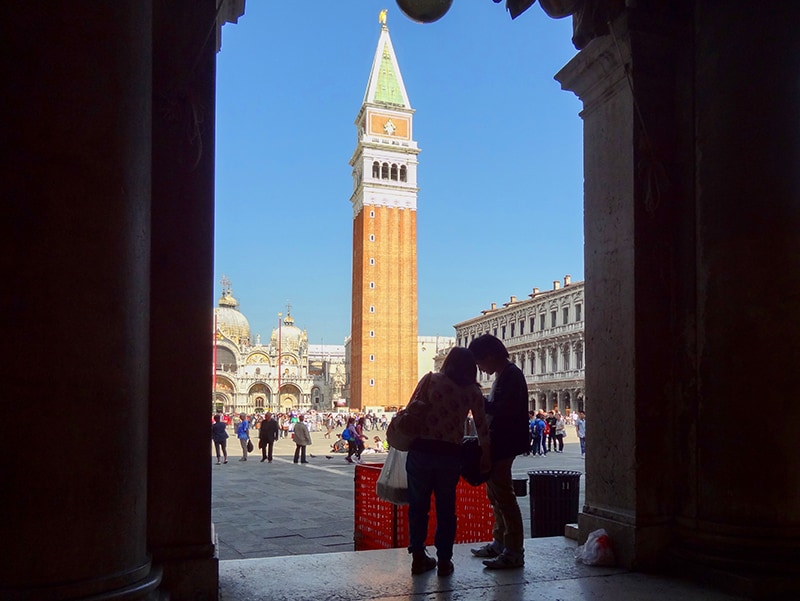
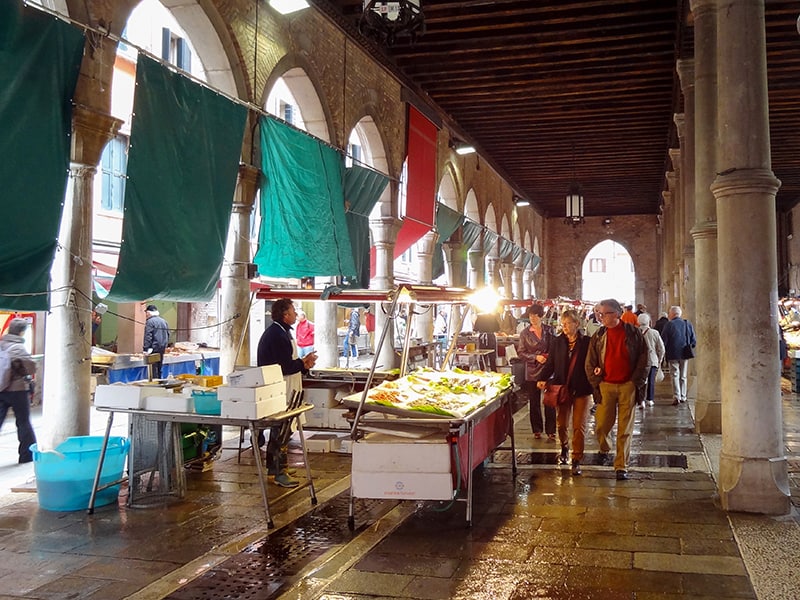
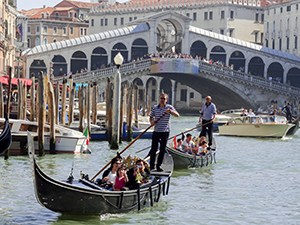
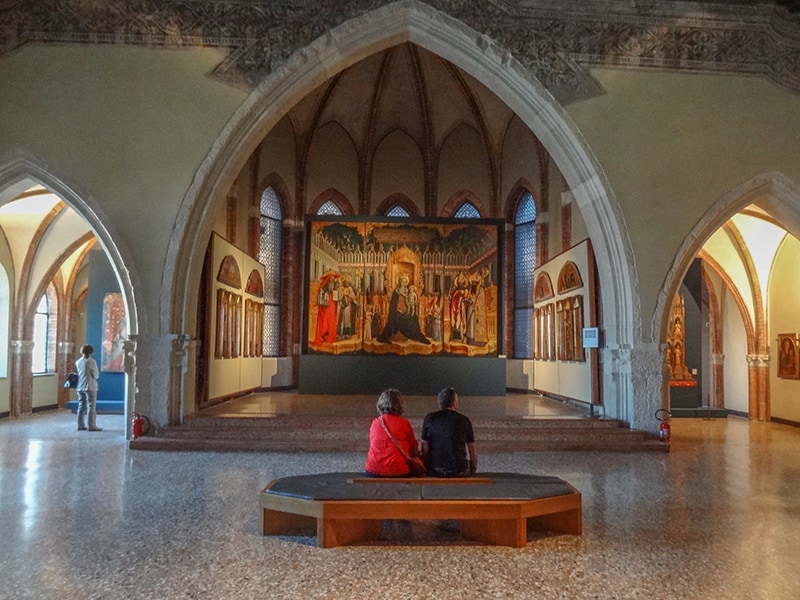
Such a wonderful article! And your photographs bring back so many memories of our days in Venice.
Thank you for taking me away from the chill and drizzle of a late winter storm here in the Blue Ridge
Mountains. Venice is certainly one of the most magical cities in the world. And your article captured
much of that magic.
Thank you Sunny. I hope all is well with you and that you’re selling many books!
Jim